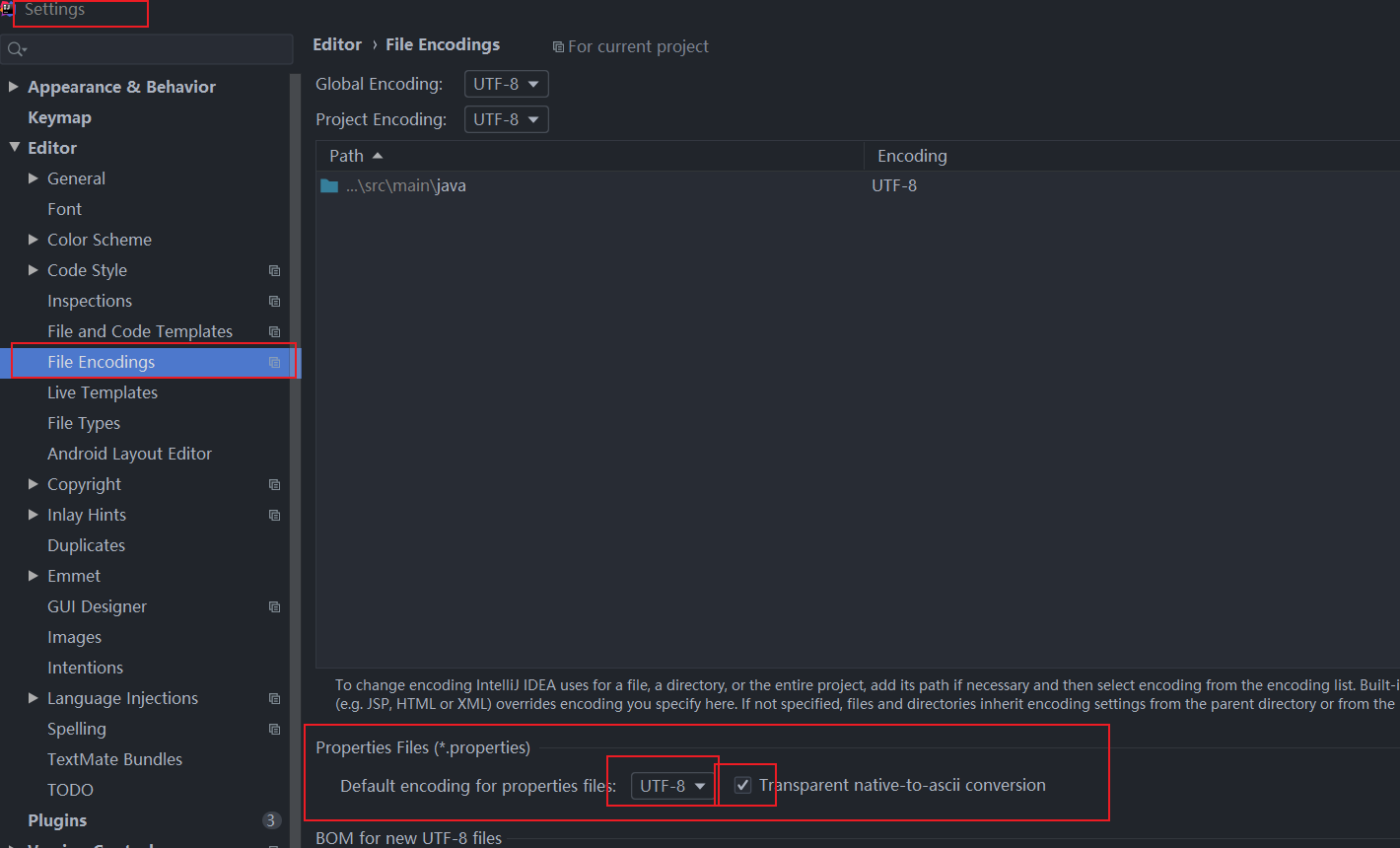Spring Expression Language (SpEL)是一種功能非常強大的表達式語言,可用于在運行時查詢和操作對象。 SpEL書寫在XML配置文件或者Annotation注解上,在Spring Bean的創建過程中生效。
SpEL能用在很多的場景下,在這篇文章中,給大家介紹一下在Spring Boot中如何使用SpEL表達式讀取配置屬性。
## 一、使用SpEL表達式綁定字符串集合
創建一個配置文件employee.properties,內容如下:
~~~
employee.names=james,curry,zimug,姚明
employee.type=教練,球員,經理
employee.age={one:'27', two : '35', three : '34', four: '26'}
~~~
* 上文中names和type屬性分別代表雇員employee的名字和分類,是字符串類型屬性
* age屬性代表雇員的年齡,是一組鍵值對、類對象數據結構
創建一個配置類?`Employee`?,代碼如下:
~~~
@Data
@Configuration
@PropertySource (name = "employeeProperties",
value = "classpath:employee.properties",
encoding = "utf-8")
public class Employee {
//使用SpEL讀取employee.properties配置文件
@Value("#{'${employee.names}'.split(',')}")
private List<String> employeeNames;
}
~~~
* @Value注解和@PropertySource注解參考《YAML配置綁定變量的兩種方式》和《加載舊項目配置文件的兩種方式》學習
## 二、測試用例
使用如下測試用例,將屬性值綁定到Employee類對象上,并將其打印
~~~
@ExtendWith(SpringExtension.class)
//@RunWith(SpringRunner.class) //Junit4開發者使用這個注解
@SpringBootTest(webEnvironment = SpringBootTest.WebEnvironment.DEFINED_PORT)
public class ValueBindTests {
@Resource
Employee employee;
@Test
public void valueBindTests2() throws Exception {
System.out.println(employee.toString());
}
}
~~~
輸出結果如圖所示,說明使用SpEL讀取employee.properties配置文件,并綁定屬性值到Employee 對象生效。

上面的例子中,我們使用SpEL表達式讀取了employee.names屬性,并將其從字符串屬性,以逗號為分隔符轉換為List類型。屬性值注入完成之后,employeeNames=\[james, curry, zimug, 姚明\]
> 如果出現中文亂碼,參考第四小節進行解決
## 二、SpEL結合@Value注解讀取配置文件屬性--更多示例
* 假如我們需要獲取第一位(數組下標從0開始)雇員的姓名,可以使用如下的SpEL表達式:
~~~
@Value ("#{'${employee.names}'.split(',')[0]}")
private String firstEmployeeName;
~~~
屬性值注入完成之后,firstEmployeeName=‘’james‘’
* 我們還可以使用@Value注解將鍵值對、類對象的數據結構轉換為java的Map數據類型
~~~
@Value ("#{${employee.age}}")
private Map<String, Integer> employeeAge;
~~~
屬性值注入完成之后,employeeAge={one=27, two=35, three=34, four=26}
* 假如我們需要根據Map的Key獲取Value屬性值,可以使用如下的SpEL表達式:
~~~
@Value ("#{${employee.age}.two}")
// @Value ("#{${employee.age}['two']}") //這樣寫也可以
private String employeeAgeTwo;
~~~
屬性值注入完成之后,employeeAgeTwo=35
* 如果我們不確定,Map中的某個key是否存在,可以使用如下的SpEL表達式。如果key存在就獲取對應的value,如果不存在就獲得默認值31
~~~
@Value ("#{${employee.age}['five'] ?: 31}")
private Integer ageWithDefaultValue;
~~~
屬性值注入完成之后,ageWithDefaultValue=31
## 三、SpEL結合 @Value注解讀取系統環境變量
還可以使用SpEL表達式讀取系統環境變量,示例如下,獲取JAVA\_HOME目錄:
~~~
@Value ("#{systemProperties['java.home']}")
private String javaHome;
~~~
同理,可以獲取系統用戶工作目錄
~~~
@Value ("#{systemProperties['user.dir']}")
private String userDir;
~~~
當然,除了以上在Spring Boot中使用SpEL的常用用法,SpEL還可以完成算術運算、邏輯運算、正則匹配運算、條件運算等功能。建議大家參照官方文檔學習。更多內容可以參考:[https://docs.spring.io/spring/docs/4.3.10.RELEASE/spring-framework-reference/html/expressions.html](https://docs.spring.io/spring/docs/4.3.10.RELEASE/spring-framework-reference/html/expressions.html)
## 四、讀取properties文件中文亂碼問題的解決
File->settings->File Encoding->圖所示選項及勾選

使用PropertySource注解時指定encoding

- 內容簡介
- 第一章 Spring boot 簡介
- 1.1 helloworld
- 1.2 提高開發效率工具lombok
- 1.3 IDEA熱部署
- 1.4 IDEA常用插件
- 1.5 常用注解
- 第二章 RESTful接口
- 2.1 RESTful風格API
- 2.1.1 spring常用注解開發RESTful接口
- 2.1.2 HTTP協議與Spring參數接收注解
- 2.1.3 Spring請求處理流程注解
- 2.2 JSON數據格式處理
- 2.2.1 Jackson的轉換示例代碼
- 2.3 針對接口編寫測試代碼
- 2.3.1 編碼接口測試示例代碼
- 2.3.2 帶severlet容器的接口測試示例代碼
- 2.3.3 Mockito測試示例代碼
- 2.3.4 Mockito輕量測試
- 2.4 使用swagger2構建API文檔
- 2.4.1 swagger2示例代碼
- 2.4.2 pom.xml
- 2.5 使用swagger2導出各種格式的接口文檔
- 第三章 sping boot配置管理
- 3.1 YAML語法
- 3.2 YAML綁定配置變量的方式
- 3.3 YAML配置屬性值校驗
- 3.4 YAML加載外部配置文件
- 3.5 SpEL表達式綁定配置項
- 3.6 不同環境下的多配置
- 3.7 配置文件的優先級
- 3.8 配置文件敏感字段加密
- 第四章 連接數據庫使用到的框架
- 4.1 spring JDBC
- 4.2 mybatis配置mybatisgenerator自動生成代碼
- 4.3 mybatis操作數據庫+dozer整合Bean自動加載
- 4.4 spring boot mybatis 規范
- 4.5 spirng 事務與分布式事務
- 4.6 spring mybaits 多數據源(未在git版本中實現)
- 4.7 mybatis+atomikos實現分布式事務(未在git版本中實現)
- 4.8 mybatis踩坑之逆向工程導致的服務無法啟動
- 4.9 Mybatis Plus
- 4.9.1.CURD快速入門
- 4.9.2.條件構造器使用與總結
- 4.9.3.自定義SQL
- 4.9.4.表格分頁與下拉分頁查詢
- 4.9.5.ActiveRecord模式
- 4.9.6.主鍵生成策略
- 4.9.7.MybatisPlus代碼生成器
- 4.9.8.邏輯刪除
- 4.9.9.字段自動填充
- 4.9.10.多租戶解決方案
- 4.9.11.雪花算法與精度丟失
- 第五章 頁面展現整合
- 5.1 webjars與靜態資源
- 5.2 模板引擎與未來趨勢
- 5.3 整合JSP
- 5.4 整合Freemarker
- 5.5 整合Thymeleaf
- 5.6 Thymeleaf基礎語法
- 5.7 Thymeleaf內置對象與工具類
- 5.8 Thymeleaf公共片段(標簽)和內聯JS
- 第六章 生命周期內的攔截、監聽
- 6.1 servlet與filter與listener的實現
- 6.1.1 FilterRegistration
- 6.1.2 CustomFilter
- 6.1.3 Customlister
- 6.1.4 FirstServlet
- 6.2 spring攔截器及請求鏈路說明
- 6.2.1 MyWebMvcConfigurer
- 6.2.2 CustomHandlerInterceptor
- 6.3 自定義事件的發布與監聽
- 6.4 應用啟動的監聽
- 第七章 嵌入式容器的配置與應用
- 7.1 嵌入式的容器配置與調整
- 7.2 切換到jetty&undertow容器
- 7.3 打war包部署到外置tomcat容器
- 第八章 統一全局異常處理
- 8.1 設計一個優秀的異常處理機制
- 8.2 自定義異常和相關數據結構
- 8.3 全局異常處理ExceptionHandler
- 8.3.1 HelloController
- 8.4 服務端數據校驗與全局異常處理
- 8.5 AOP實現完美異常處理方案
- 第九章 日志框架與全局日志管理
- 9.1 日志框架的簡介與選型
- 9.2 logback日志框架整合使用
- 9.3 log4j2日志框架整合與使用
- 9.4 攔截器實現用戶統一訪問日志
- 第十章 異步任務與定時任務
- 10.1 實現Async異步任務
- 10.2 為異步任務規劃線程池
- 10.3 通過@Scheduled實現定時任務
- 10.4 quartz簡單定時任務(內存持久化)
- 10.5 quartz動態定時任務(數據庫持久化)
- 番外章節
- 1.windows下安裝git
- 1 git的使用
- 2 idea通過git上傳代碼到github
- 2.maven配置
- 3.idea幾個輔助插件
- 4.idea配置數據庫
- 5.搭建外網穿透實現外網訪問內網項目
- 6.idea設置修改頁面自動刷新
- 7.本地tomcat啟動亂碼
- 8.win10桌面整理,得到一個整潔的桌面
- 9.//TODO的用法
- 10.navicat for mysql 工具激活
- 11.安裝redis
- 12.idea修改內存
- 13.IDEA svn配置
- 14.IntelliJ IDEA像Eclipse一樣打開多個項目
